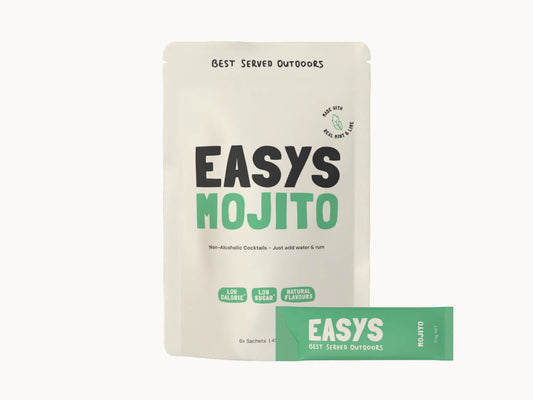
Routeburn Great Walk: An Alpine Adventure
The Routeburn Track is one of New Zealand’s most iconic hikes, offering 2-4 days of alpine beauty, breathtaking vistas, and pristine forests. As you journey through towering mountains and past alpine lakes, you’ll experience some of the country’s most dramatic landscapes.
-
About the Routeburn Track
- Track Type: 32km one-way
- Sleeping: Hut or Camping
- Start & End Point: Routeburn Shelter or The Divide
- Difficulty: 4/5
- Fitness Rating: High
- Trip Length: 2-4 days
- Best Time of Year to Go: November – April
- Track Type: 32km one-way
-
How to book the Routeburn Track
Department of Conservation websiteVisit the Department of Conservation (DOC) website to learn more about when you can book your trip, and anything else you need to know.
Track Description
The Routeburn Great Walk is a breathtaking 32 km alpine trail weaving through the heart of Fiordland and Mount Aspiring National Parks. Starting at Routeburn Shelter near Glenorchy, the track follows the picturesque Route Burn river through ancient beech forests and crosses the iconic Routeburn Suspension Bridge. As you climb higher, the landscape shifts to open alpine tussock and rocky ridges, rewarding hikers with sweeping views of jagged peaks, crystal-clear tarns, and cascading waterfalls like Routeburn Falls.
The highest point, Harris Saddle (1320m), offers panoramic vistas of the surrounding mountains and valleys — a perfect spot to pause and take it all in. From there, the trail descends through a mix of alpine meadows and native forest before finishing at The Divide on the Milford Road. Along the way, well-maintained DOC huts provide comfortable resting spots, blending wilderness adventure with a touch of comfort.
This walk is a must-do for those craving stunning mountain scenery, diverse ecosystems, and an unforgettable New Zealand backcountry experience.
Trail Tip: Be sure to book your huts or campsites early, especially during peak season, as this track is highly popular.

What Makes the Track Special
The Routeburn Track offers some of New Zealand's finest alpine scenery. From its lush forest beginnings to the high alpine ridges, the landscapes change dramatically, giving hikers the chance to experience a variety of terrains and views. The track also offers some incredible photo opportunities, particularly at Lake Mackenzie, where the surrounding peaks reflect in the crystal-clear waters.
Day-by-Day Breakdown
Day 1: Routeburn Shelter to Routeburn Falls Hut
- Distance: 12 km
- Estimated Time: 4–6 hours
- Highlights:
- Walk through lush beech forest along the Route Burn river
- Cross the iconic Routeburn Suspension Bridge
- Ascend gradually towards Routeburn Falls Hut
- Sleeping: Routeburn Falls Hut or nearby campsite
Day 2: Routeburn Falls Hut to Harris Saddle Hut
- Distance: 11 km
- Estimated Time: 5–7 hours
- Highlights:
- Steep climb up to Harris Saddle (1320m), the highest point on the track
- Panoramic views of the Darran Mountains and valleys below
- Harris Saddle Hut nestled in alpine tussock and tarns
- Sleeping: Harris Saddle Hut or campsite
Day 3: Harris Saddle Hut to The Divide
- Distance: 9 km
- Estimated Time: 3–5 hours
- Highlights:
- Descend through alpine meadow and forest
- Pass the Earland Falls viewpoint
- Finish at The Divide, where shuttle services are available
- Note: Some hikers complete the walk in 2 days by covering longer distances
Highlights
- Stunning alpine panoramas from Harris Saddle
- The Routeburn Suspension Bridge and River
- Routeburn Falls and Earland Falls waterfalls
- Diverse landscapes from forest to alpine tundra
- Access to both Fiordland and Mount Aspiring National Parks
- Well-maintained DOC huts with bunks, water, and cooking facilities
Difficulty and Fitness
- Moderate to challenging due to elevation gain and rugged terrain
- Recommended for hikers with good fitness and some mountain walking experience
- Track is well marked but can be slippery when wet
- Weather can change rapidly—be prepared for alpine conditions
Best Time to Go
- Season: Late October to late April (summer and early autumn)
- Weather: Generally milder, but still variable — expect cold, wind, and rain at higher elevations
- Booking: Essential during peak season (December to February) as huts fill quickly
- Tip: Avoid winter due to snow and hazardous conditions
Accommodation and Booking
- Book huts and campsites through the Department of Conservation (DOC) website well in advance
- Huts sleep between 20 and 50 people; bookings essential for peace of mind
- Camping allowed only at designated sites near huts
- Shuttle services available at start and end points for transport
What to Pack for New Zealand's Great Walks
New Zealand’s Great Walks are stunning, but they’re no stroll in the park. The weather can change fast, huts vary in what they offer, and you’ll burn a heap of calories each day — so packing right makes all the difference. Here’s a practical list based on what we actually take tramping.
Essential Gear
Stick to the basics and don’t overpack — weight adds up fast. Bring only what you’ll actually use and make sure it holds up in wet, cold, and muddy conditions.
- Backpack (40–60L) – Comfortable and supportive. You’ll feel every gram on long climbs.
- Rainproof pack cover or liner – Expect rain. Keep your gear dry inside your pack.
- Sleeping bag – Lightweight but warm enough for cold hut nights.
- Cookware – Most huts have gas and stoves (but check with DOC); just bring pot, bowl, mug, and a spork.
- Head torch – More reliable than your phone light, especially for late-night toilet runs.
- Water bladder or drink bottle – Stay hydrated across long days on the trail.
- Water filter or tablets – Streams are usually safe but better to treat when unsure.
- First aid kit – Include blister gear, painkillers, antiseptic, and plasters.
- Map or topo – Phone GPS can die; printed maps always work.
- Microfibre towel – Quick drying and lightweight for hut use.
- Ziplocks or dry bags – For dirty clothes, food, and rubbish (which you must carry out).
- Ear plugs – Huts get loud. Snoring is guaranteed.
Clothing (Layer Up!)
Keep it simple: one set of hiking gear, one set of clean gear for huts. Use merino where possible — it’s warm, lightweight, and doesn’t stink.
- Thermal base layers (top & bottom) – For warmth at night or in cold weather.
- Waterproof rain jacket – Essential year-round. Weather changes fast.
- Down jacket or fleece – Adds warmth in huts or cold evenings.
- Merino t-shirt – Breathable and odour-resistant for hiking days.
- Hiking socks & undies – Bring spares. Dry feet = happy feet.
- Shorts / swimwear – Optional, but nice for river dips or warm days.
- Warm hat, sun hat & gloves – Cover both ends of the weather spectrum.
- Hiking boots – Waterproof and broken-in to avoid blisters.
- Jandals/slides – For relaxing in the hut and airing out feet.
Food
Bring enough for every day plus one extra — and don’t underestimate how much you’ll eat. You'll be burning through energy fast.
- Dehydrated meals – Lightweight and easy to cook in huts.
- Oats or muesli – Reliable breakfast that packs small.
- Wraps with PB&J – No refrigeration needed and calorie dense.
- Bars, trail mix – Great for snacking between stops.
- Coffee or tea – For morning motivation and hut chill time.
Nice-to-haves
Not essential, but these can make your trip more comfortable if you have the space.
- Power bank & charging cable – For your phone, GPS, or headlamp if rechargeable.
- Sleeping bag liner – Adds warmth and keeps your bag clean.
- Book or cards – Helps pass time at the hut without reception.
Toiletries
Go lightweight, but don’t skip the essentials. Keep it all together in a dry bag or ziplock.
- Toothbrush & toothpaste
- Deodorant
- Sunscreen – The UV in NZ is no joke, even when it’s cloudy.
- Insect repellent – Sandflies are brutal in forested and coastal areas.
- Hand sanitiser
- Vaseline or anti-chafe cream
For the end of the day
There’s nothing better than reaching the hut after a solid day on the trail. Whether you’re drying your boots by the fire, sitting beside a lake, or watching the sunset from a ridgeline — it’s the perfect time to crack an Easys.
Easys are lightweight powdered cocktails made for the outdoors. Just add water (and a splash of spirits if you want) and you’ve got yourself a refreshing drink — no heavy bottles needed. Easy to carry. Easy to make. Bloody good at the end of a hike.
-
Mojito - 6 Pack
5.0 / 5.0
(8) 8 total reviews
Regular price $19.99 NZDRegular priceUnit price / per -
Margarita - 6 Pack
5.0 / 5.0
(6) 6 total reviews
Regular price $19.99 NZDRegular priceUnit price / per -
Piña Colada - 6 Pack
4.86 / 5.0
(8) 8 total reviews
Regular price $19.99 NZDRegular priceUnit price / per
book your great walk
Find more information about New Zealand's Great Walks on the Department of Conservation's website. From here, you'll find everything you need about booking tracks. We'll see you out there!
Routeburn Great Walk FAQS
How long does the Routeburn Great Walk take?
Typically 2–3 days depending on fitness and pace. Some complete it in 2 days; others take 3 for a more relaxed pace.
Do I need to book accommodation?
Yes, hut and campsite bookings are essential during peak season (Dec–Feb). Book early via the DOC website.
Is the Routeburn suitable for beginners?
The track requires a moderate to high level of fitness and mountain hiking experience due to elevation changes and alpine conditions.
Can I do the walk independently?
Yes, but ensure you are well prepared with gear, navigation skills, and knowledge of weather conditions.
Are dogs allowed on the Routeburn Track?
No, dogs are prohibited on the Great Walks.
What is the weather like on the Routeburn?
Weather can be unpredictable with rain, wind, and cold temperatures common, even in summer. Be prepared for all conditions.
Is there mobile phone coverage on the track?
Coverage is very limited, especially in the alpine sections.
Are there water sources along the track?
Yes, fresh water is available near huts and streams, but always treat or filter water before drinking.


